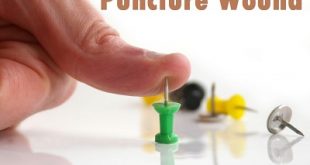Definition Milk allergy is one of the more common food allergies and affects many people. It’s a result of an abnormal immune response to the constituent parts of the milk from any animal (the most common allergy response is due to alpha S1-casein, a protein in cow’s milk). Milk-induced allergic …
Read More »Myopia or Nearsightedness – Grades, Causes and Treatment
Definition Myopia, otherwise known as short-sightedness, is a common eye condition that causes objects in the distance to appear blurred while close objects are often seen clearly. It occurs when the eye has too much focusing power, either due to the eye being too long or the cornea being more …
Read More »Convulsion – Diagnosis, Treatment, and Prevention.
What is Convulsion? A convulsion is an episode in which you experience rigidity and uncontrolled muscle spasms along with altered consciousness. The spasms cause jerky motions that generally last a minute or two. Convulsions can occur during certain kinds of epileptic seizures, but you can have convulsions even though you …
Read More »Molluscum Contagiosum – Pathophysiology, Causes and Treatment
Definition Molluscum contagiosum is a mild skin disease (skin infection) caused by a virus (molluscum contagiosum virus, a member of the Poxviridae family) that causes usually painless small bumps or lumps (flesh-colored or skin-colored, dome-shaped papules); some may be umbilicated, meaning the lesion has a central depression with a spot …
Read More »Refsum Disease – Causes, Pathophysiology and Complications
Definition Refsum disease is a genetic disorder that affects the metabolism of the fatty acid phytanic acid. When phytanic acid accumulates, it causes a number of progressive problems, including retinitis pigmentosa, peripheral neuropathy, anosmia, deafness, cerebellar ataxia and elevated protein concentrations in the cerebrospinal fluid in the absence of an …
Read More »Puncture Wound – Types, First aid and Treatment
Definition Puncture wound is a deep wound made by a sharp object, such as a nail or a jagged piece of metal or wood. Puncture wounds may be small and not seem serious. But they do need to be treated by a healthcare provider. Puncture wounds may become infected easily. …
Read More »Erysipelas – Complications, Treatment and Prevention
Definition Erysipelas is an infection of the upper layers of the skin (superficial). The most common cause is group A streptococcal bacteria, especially Streptococcus pyogenes. Erysipelas results in a fiery red rash with raised edges that can easily be distinguished from the skin around it. The affected skin may be …
Read More »Stretch Marks – Types, Causes, Risk Factors and Treatment
Definition Stretch marks (striae or striae distensae) is a form of scarring on the skin with a pinkish or whitish hue that appears when your skin stretches or shrinks quickly. Collagen is a protein underneath your skin that makes it more elastic and supports your skin. Your skin tries to …
Read More » Diseases Treatments Dictionary This is complete solution to read all diseases treatments Which covers Prevention, Causes, Symptoms, Medical Terms, Drugs, Prescription, Natural Remedies with cures and Treatments. Most of the common diseases were listed in names, split with categories.
Diseases Treatments Dictionary This is complete solution to read all diseases treatments Which covers Prevention, Causes, Symptoms, Medical Terms, Drugs, Prescription, Natural Remedies with cures and Treatments. Most of the common diseases were listed in names, split with categories.








